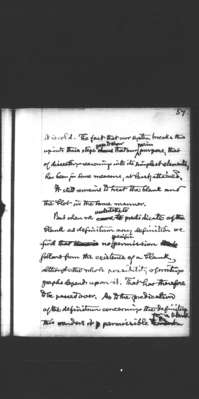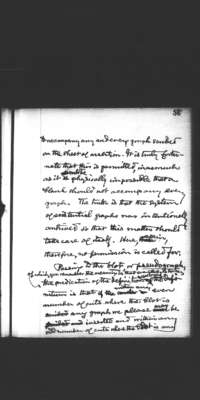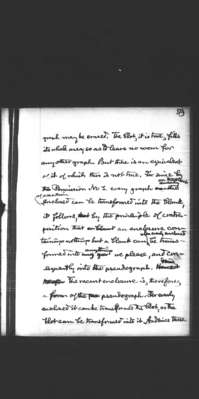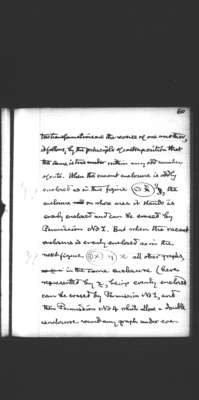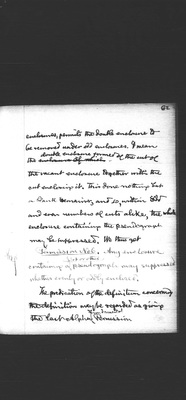Pages
61
57
it is cold. The fact that our system breaks this up into three steps shows goes to show that our main purpose, that of dissecting reasoning into its simplest elements, has been , in some measure, at least, attained.
It still remains to treat the blank and the blot in the same manner.
But when we undertake to predicate of the blank as definitum any definition we find that there is no specific permission follows from the existence of a blank, although the whole possibility of writing graphs depends upon it. That has therefore to be passed over. As to the predication of the definition concerning the definitum, this renders it permissible for a blank
62
58
to accompany any and every graph scribed on the sheet of assertion. It is truly fortunate that this is permitted, inasmuch as it is would be physically impossible that a blank should not accompany every graph. The truth is that the system of existential graphs was intentionally contrived so that this matter should take care of itself. Here, again, therefore, no permission is called for.
Passing to the blot, or pseudograph, of which you remember the meaning is that everything is true, the predication of the definition concerning the definitum is that within any even number of cuts where the blot is scribed any graph we please may be scribed and inserted and within any odd number of cuts where the blot is any
63
59
graph may be erased. The blot, it is true, fills its whole area, so as to leave no room for any other graph. But there is an equivalent of it of which this is not true. For since by the Permission No 1 every graph evenly on the sheet of assertion enclosed[?] can be transformed into the blank, it follows, by the principle of contraposition that an enclosure containing nothing but a blank can when evenly enclosed be transformed into anything we please, and consequently into the pseudograph. The vacant enclosure is, therefore, a form of the pseudograph. For evenly enclosed it can be transformed [into] the blot, or the blot can be transformed into it. And since these
64
60
two transformations are the reverse of one another, it follows, by the principle of contraposition that the same is true within any odd number of cuts. When the vacant enclosure is oddly enclosed as in this figure y, the enclosure on whose area it stands is evenly enclosed and can be erased by Permission No 1. But when the vacant enclosure is evenly enclosed as in the next figure z all other graphs, in the same enclosure (here represented by x[)], being evenly enclosed can be erased by Permission No 1, and then Permission No 4 which allows a double enclosure round any graph under even
65
62
enclosures, permits the double enclosure to be removed under odd enclosures. I mean the double enclosure formed of the cut of the vacant enclosure together with the cut enclosing it. This done nothing but a blank remains; and so, within odd and even numbers of cuts alike, the whole enclosure containing the pseudograph may be suppressed. We thus get
Permission No 6. Any enclosure containing a blot or other pseudograph may [be] suppressed whether evenly or oddly enclosed.
The predication of the definitum concerning the definition may be regarded as giving the last Alpha Fundamental Permission.
